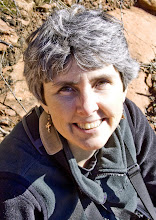

These two shots were taken at the same time as the infrared below, but with color digital photography (a
Nikon D70). The first is a regular shot and the
second is the same shot, but processed in HDR (high dynamic range). There's a good discussion on HDR
here on Wiki, but basically the idea is to correct for lighting challenges. For example, without bringing lighting with you, there are going to be areas in the picture too dark to see detail and if you expose for your main subject, the sky will likely be washed out. For true HDR, you need patience and a tripod. Take one picture with the appropriate exposure, one or two under-exposed 1-2 F stops, and one or two over-exposed by 1-2 F stops. Then process them in Photoshop or even easier with
Photomatix. There's free trial software at their website to play with. It leaves a watermark until you pay for it, but you'll get the idea. Faux HDR is done (the bottom shot) by processing the raw image so Photomatix does all the work of creating the other exposures. With experience, you can fine tune it to your preference. On a Mac, it's super easy-- just open the raw image in Photomatix. On a PC, you need to first create and save under and over exposed images in Photoshop first when you open as a raw image and then load them into Photomatix as if they were separate shots.


















